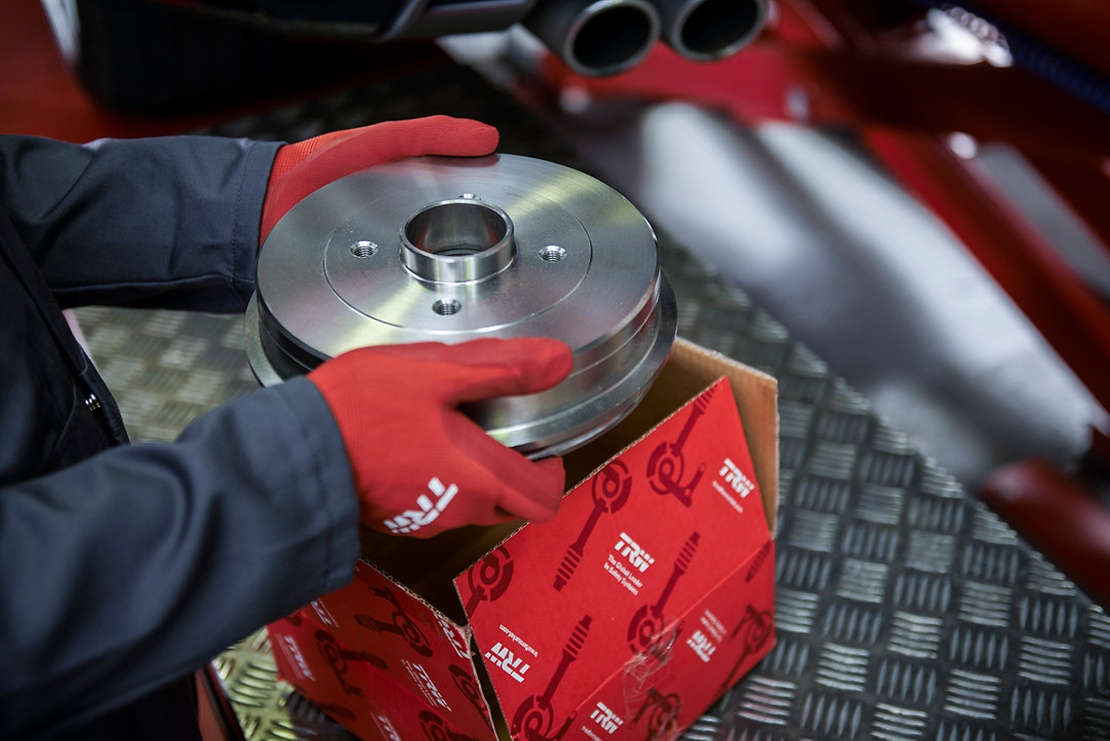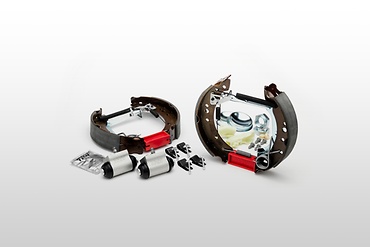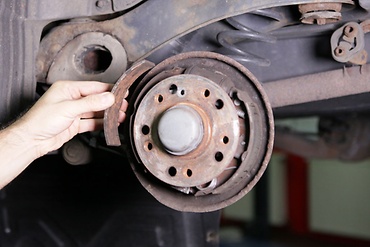How-to-guide
With the vehicle on a suitable lift, remove the road wheels. Next remove the cap covering the hub nut. Remove the hub nut. Insert a screwdriver or other such instrument into the wheel bolt mounting holes and release the auto adjust mechanism. Proceed to remove the brake drum.
Using the correct tools, remove the hold down spring retainer clips, then remove the shoes from their bottom locations. Once this is done, it should be possible to dismantle the shoe as shown and remove and detach the handbrake cable. Now disconnect the brake hose from the wheel cylinder and remove the old wheel cylinder.
Install the new wheel cylinder and attach to the backing plate. Reattach the brake pipe to the wheel cylinder.
If replacing the brake drum, it will be necessary to carefully remove the ABS sensor ring from the old drum as this will be required to be reinstalled on the new drum.
Additional work may be required if a new drum is being fitted and the one supplied does not have the bearing pre-mounted. Using a suitable brake cleaner, clean the backing plate and all mounting surfaces.
Check the integrity of the handbrake cable, then apply the grease provided in the superkit box to the contact areas on the backing plate.
Note: Only a small amount of grease is required and should only be applied to the points indicated as too much grease will attract brake dust and cause more problems during the service life of the brakes.
Reattach the handbrake cable to the handbrake lever on the new shoe kit and install the pre-assembled shoe kit into position locating the top parts of the wheel cylinder first followed by the bottom locations. Attach the new hold down pins and spring clips and reattach the drum and tighten the hub nut to the correct torque.
Reattach the brake drum and secure with a new hub nut and finally replace the hub nut cover. Next, bleed the brake system in accordance with the vehicle manufacturer’s instructions. Attach the brake bleeding machine to the fluid reservoir on the master cylinder using the appropriate adapter. Attach collecting vessel to the bleed nipple on the wheel cylinder. Release the bleed nipple and collect fluid and bleed the system. Reattach the road wheel and with the vehicle on the floor, torque the road wheel nuts to the appropriate level as recommended by the vehicle manufacturer. The job is now complete.
Nice-to-know

ZF Aftermarket product range
Discover the complete portfolio of brakes in our product catalog.

